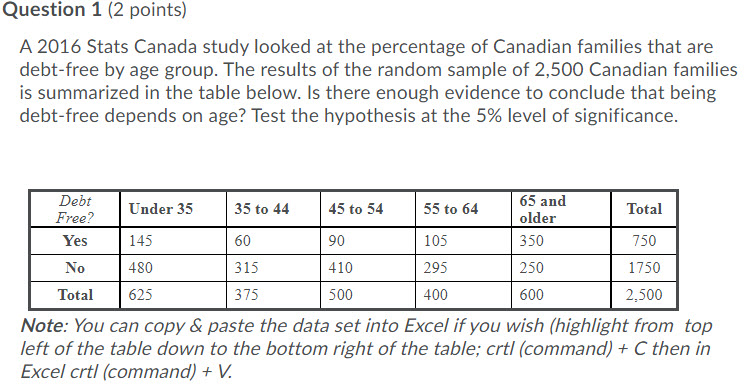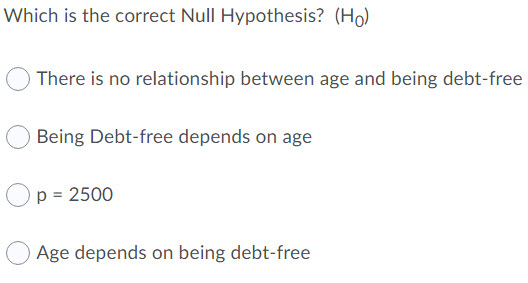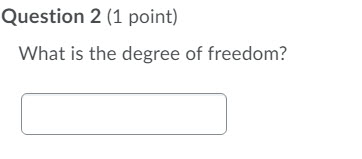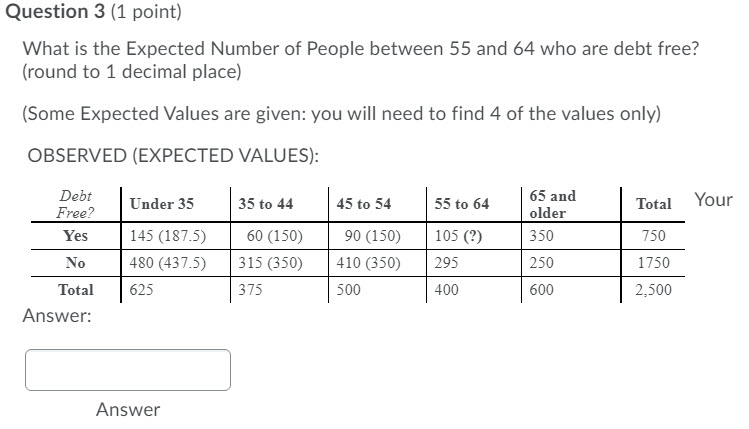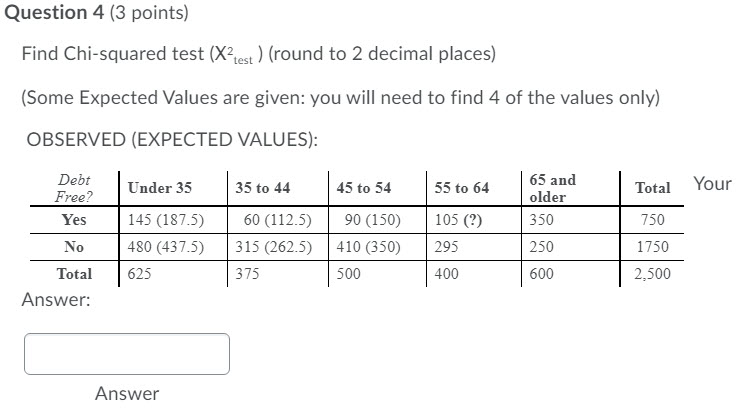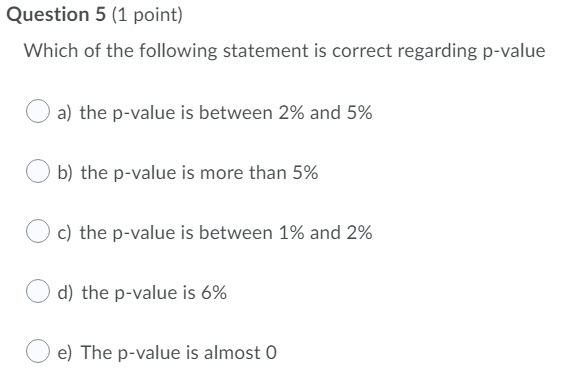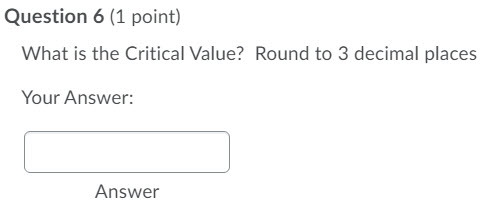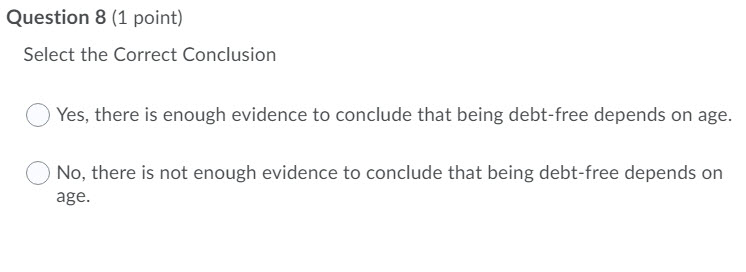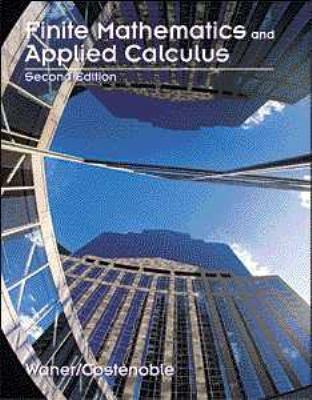Please answer below:
Question 1 (2 points) A 2016 Stats Canada study looked at the percentage of Canadian families that are debt-free by age group. The results of the random sample of 2,500 Canadian families is summarized in the table below. Is there enough evidence to conclude that being debt-free depends on age? Test the hypothesis at the 5% level of significance. Debt Under 35 35 to 44 45 to 54 55 to 64 65 and Total Free? older Yes 145 60 90 105 350 750 No 480 315 410 295 250 1750 Total 625 375 500 400 600 2,500 Note: You can copy & paste the data set into Excel if you wish (highlight from top left of the table down to the bottom right of the table; crtl (command) + C then in Excel crtl (command) + V.Which is the correct Null Hypothesis? (Ho) O There is no relationship between age and being debt-free Being Debt-free depends on age Op = 2500 Age depends on being debt-free\fQuestion 3 (1 point) What is the Expected Number of People between 55 and 64 who are debt free? (round to 1 decimal place) (Some Expected Values are given: you will need to find 4 of the values only) OBSERVED (EXPECTED VALUES): Debt 35 to 44 45 to 54 55 to 64 65 and Total Your Free? Under 35 older Yes 145 (187.5) 60 (150) 90 (150) 105 (?) 350 750 No 480 (437.5) 315 (350) 410 (350) 295 250 1750 Total 625 375 500 400 600 2,500 Answer: AnswerQuestion 4 (3 points) Find Chi-squared test (X3test ) (round to 2 decimal places) (Some Expected Values are given: you will need to find 4 of the values only) OBSERVED (EXPECTED VALUES): Debt 65 and Under 35 35 to 44 45 to 54 55 to 64 Total Your Free? older Yes 145 (187.5) 60 (112.5) 90 (150) 105 (?) 350 750 No 480 (437.5) 315 (262.5) 410 (350) 295 250 1750 Total 625 375 500 400 600 2,500 Answer: AnswerQuestion 5 (1 point) Which of the following statement is correct regarding p-value (O a) the p-value is between 2% and 5% (b) the p-value is more than 5% O c) the p-value is between 1% and 2% O d) the p-value is 6% O e) The p-value is almost 0Question 6 (1 point) What is the Critical Value? Round to 3 decimal places Your Answer: AnswerQuestion 3 {1 point) Select the Correct Conclusion 0 Yes, there is enough evidence to conclude that being debt-free depends on age. 0 No, there is not enough evidence to conclude that being debt-free depends on age. Question 7 (2 points) Which of the following statement(s) is/are correct regarding decision for this hypothesis test? Select 2 correct answer(s) O Reject Ho as p-value is smaller than the alpha. O Fail Ho as p-value is bigger than the alpha. Reject Ho as p-value is bigger than the alpha. O Fail to reject Ho as p-value is smaller than the alpha. O Reject Ho, because the test statistic is bigger than the critical value.Reject Ho, because the test statistic is bigger than the critical value. Xtest > Xcritical 2 Reject Ho, because the test statistic is smaller than the critical value. Xtest > Xcritical Fail to reject Ho, because the test statistic is smaller than the critical value. Xtest > Xcritical Fail to reject Ho, because the test statistic is bigger than the critical value. Xtest > Xcritical 2
